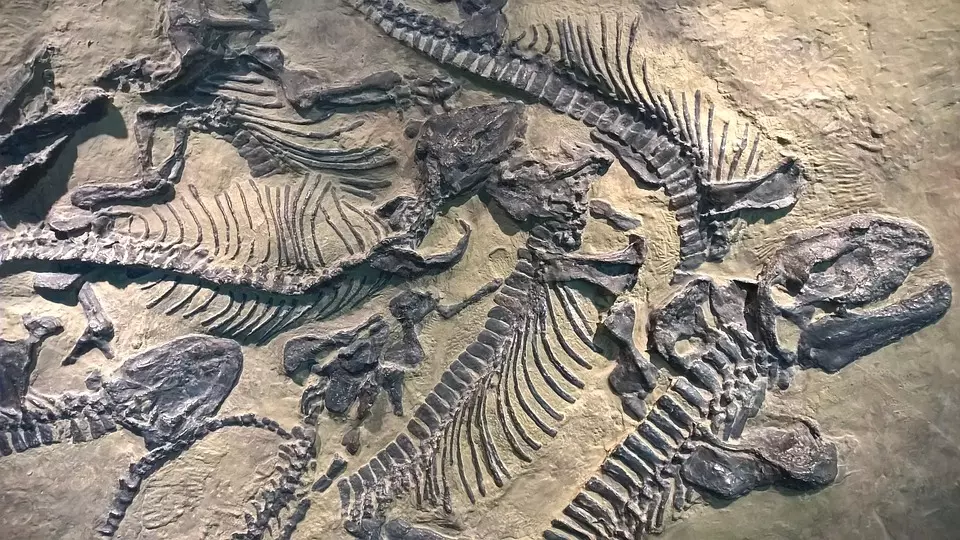[Originally published as the first part of Stephen Jay Gould-Fervent Anti-Creationist]
This article aims to understand the thought process of an ardent evolutionist who was unusually aggressive in his attacks on creation science, creationists, and creationism. Whereas the majority of evolutionary scientists are notable for ignoring creationists and their work, Gould was undoubtedly the most anti-creationist (and probably most well-known) paleontologist of the last third of the 20th century. In part, his notoriety was due to his written and verbal attacks on biblical creationists.
It is important to acknowledge hat much of Gould’s vitriol against them was because creationists had often taken his written words as being supportive of the biblical creationist worldview, rather than an internal critique against microevolution. Gould was a prolific writer on evolution and historical geology. He is known for at least 814 titles,1 many of them published in a long series of essays in the Natural History magazine that ran from 1973 to 2000.
To research this article, I read over 80 of his Natural History essays, adding up to nearly 2000 pages of information. First, I will present a series of quotes showing his rejection of the idea of gradualism in the deep history of organic macroevolution as hypothesized especially by Darwin. Gould and another paleontologist, Niles Eldredge, became famous for their theory first called “punctuated equilibria” and later changed to “punctuated equilibrium.”
The extreme rarity of transitional forms in the fossil record persists as the trade secret of paleontology. The evolutionary trees that adorn our textbooks have data only at the tips and nodes of their branches; the rest is inference, however reasonable, not the evidence of fossils.
“Paleontologists have paid an exorbitant price for Darwin’s argument. We fancy ourselves as the only true students of life’s history, yet to preserve our favored account of evolution by natural selection we view our data as so bad that we never see the very process we profess to study.”
“The history of most fossil species includes two features particularly inconsistent with gradualism.
1. Stasis. Most species exhibit no directional change during their tenure on earth. They appear in the fossil record looking much the same as when they disappear; morphological change is usually limited and directionless.
2. Sudden appearance. In any local area, a species does not arise gradually by the steady transformation of its ancestors; it appears all at once and ‘fully formed.’”2
All paleontologists know that the fossil record contains precious little in the way of intermediate forms; transitions between major groups are characteristically abrupt.3
Darwinism has long hypothesized that there is no evolution seen in the fossils of the rock record because the fossils just have not yet been found. Every year this becomes more farfetched as ever-increasing numbers of fossils have been found, studied, and described. Gould and Eldridge developed a theory based on this lack of evidence, postulating that evolution has always taken place in spurts that ended so quickly that they left no fossil record. Thus, creationists point out that Gould and Eldridge have proposed a theory based on evidence that reinforces the expectations of creation science and does not help evolutionary theories in the least.
Repeatedly in his published work, Gould assumed that deep time was an undisputed fact of history. In hundreds of cases, he quoted timelines illustrating when certain lifeforms lived or went extinct with the level of certainty characteristic of humanly witnessed historical data.
Gould’s admission of the lack of evidence left him in an interesting situation where he attempted to explain away the problem by introducing the concept of punctuated equilibrium. But how to describe this idea? Gould wrote thousands of words in the attempt, including this definition:
“Punctuated equilibrium is a theory about the origin and history of species—that is, the stability of individual species counts as the ‘nothing’ that our theory promoted to the interest and attention of researchers. A different kind of ‘nothing’ permeates, and also biases, our consideration of the next most inclusive level of evolutionary stories—the history of phyletic bushes, or groups of species sharing a common ancestry: the evolution of horses, of dinosaurs, of humans for example. This literature is dominated by the study of trends—directional changes through time in average characteristics of species within the bush.”4
This definition reminds me of the ‘nothingness’ of the Big Bang where there was ‘nothing’ and then in a flash everything. This quote, like other statements Gould wrote, simply assumes evolution just as he assumed deep time. His statements can be understood to be faith statements. In all his writings, he never provided a single piece of evidence that evolution is true.
When creationists took advantage of Gould’s observations regarding the fossil record, he responded with disdain:
Those silly creationists, thinking punctuated equilibrium supports their views. Of course it does nothing of the sort.1
“The world of creationists is too imbued with irrefutable dogma, and they don’t seem able even to grasp enough about science to put up a good show in imitation.”5
Creationist Henry Morris remarked that in his 1,433-page opus about evolution, Gould referred angrily to “the scourge of creationism” and that Gould had refused many invitations to debate a qualified creation scientist with the explanation that it would be a mistake to dignify creationism and its scientists in such a way. Morris related too that, according to Gould, creationists “always relied, as a primary strategy, upon the misquotation of scientific sources.” This is certainly not the case with their use of Gould’s work, since there is no reason a creationist would need to intentionally misquote Gould to nefariously take advantage of his beliefs.
Gould also misrepresented the biblical creationist belief about the creation:
“…fundamentalist doctrine known by its self-proclaimed oxymoron as ‘scientific creationism’—the claim that the Bible is literally true, that all organisms were created during six days of twenty-four hours, that the earth is only a few thousand years old, and that evolution must therefore be false. Creationism does not pit science against religion (as my stories indicate), for no such conflict exists. Creationism does not raise any unsettled intellectual issues about the nature of biology or the history of life. Creationism is a local and parochial movement, powerful only in the United States among Western nations, and prevalent only among the few sectors of American Protestantism that choose to read the Bible as an inerrant document, literally true in every jot and tittle.”6
The most important misrepresentation (or perhaps misunderstanding) here is that biblical creationists do not say that all “organisms” were created in the beginning. The Bible clearly says that God created life according to kinds. Creationists interpret this to mean that the life that was created was perhaps at the family level with inbuilt capability for adaptation and variation within those kinds to the multitudes of genera and species we see alive today and in the fossils.
Also, the vast majority of biblical creationists posit that the creation took place between 6,000 and 7,000 years ago. This is “only a few thousand years old” if one has been indoctrinated into belief in millions or billions of years. Six thousand years is a long time from the perspective of what is really known about the development of human technology and civilizations and represents at least 100 generations. The rate at which the human genome is degenerating (mutating) does not allow for the thousands or millions of years of human existence proposed by evolutionists like Gould.
Creationists agree that there is no battle between true science and biblical Christianity. But Gould’s ideas about what is science and what is religion do not match up to what God’s Word says.
Other evolutionists do not agree with Gould’s statement that creationism is only an American movement: “Although Gould understood that creationism is not synonymous with religion, he vastly underestimated the extent and power of creationism.”1
Gould’s general aversion to gradualism forced him to reject another standard tenet of evolutionary thought. The principle of uniformitarianism is tightly held to by the vast majority of evolutionists of every category, but not by Gould.
“I have focused this essay upon one of the great unconscious biases—our persisting preference for viewing history as a tale of linear progress—that so often stymie our interpretations of evolution and the history of life on Earth. But we should also recognize this other, rather more ‘homey’ or obvious bias—our tendency to view a comfortable and well-known current situation as a generality rather than a potential exception. Such an attitude also has a highfaluting name in the history of science—uniformitarianism or using the present as a key to the past.”6
Biblical creationists see this as being complementary to their rejection of uniformitarianism because it is a contradiction of the history of the creation and the global Flood. Creationists are opposed to the claims of uniformitarianism because it is used to block acceptance of catastrophism, which is a foundation of the biblical accounts in Genesis 1–11. Observational science confirms that the global Flood impacted every place on earth to anyone open to seeing the evidence all around them.
Gould was a strong contributor to the forces that successfully fought the attempt by some creationists to legally enforce laws allowing for the secular education system to teach creation alongside evolution. Gould wrote:
Our legal battle with creationists started in the 1920s and reached an early climax with the conviction of John Scopes in 1925. After some quiescence, the conflict began in earnest again during the 1970s and has haunted us ever since. Finally, in June 1987, the Supreme Court ended this major chapter in American history with a decisive 7-2 vote, striking down the last creationist statute, the Louisiana equal time act, as a ruse to inject religion into science classrooms in violation of First Amendment guarantees for separation of church and state.5
In the same essay Gould continued to attack the conservative minority justices Scalia and Rehnquist with how imprudent they were concerning their lack of understanding about evolution and science in general and their rulings that Gould saw to be implausible. Gould wrote: “We are not blessed with absolute certainty about any fact of nature, but evolution is as well confirmed as anything we know—surely as well as the earth’s shape and position…”
In this essay, the gist of Gould’s argument was that creationism was fundamentalist religion, evolutionists do not study the origin of life, and creationists do not do science. The truth is that Gould hardly ever relied on observation in the promotion of his “science.” In addition, his ideas were so far out of the mainstream that most traditional paleontologists either rejected them or did not ever understand them.
Remember that Gould rejected evolutionary gradualism, transitional fossils, and uniformitarianism. These are all foundational topics in any university course in paleontology or historical geology. In Gould’s mind chemical, cosmological, and astronomical evolutionists were not true members of the evolutionist club to which he belonged. And then Gould wrote “…fundamentalism ranks among the most potent irrationalisms.”
For Gould to attack fundamentals when his whole career was spent attempting to identify scientific fundamentals for evolution is self-contradictory, if not somewhat humorous. Fundamentals are required for success in almost any worthy human endeavor. I would ask who really is irrational in this argument Gould or creationists?
References
- Allmon, W.D., Kelley, P.H. & Ross, R.M. editors, Stephen Jay Gould: Reflections on His View of Life, Oxford University Press, 2009.
- Gould, S.J., Natural History, “Evolution’s Erratic Pace,” vol. 86 (May 1977).
- Gould, S.J., Natural History, “The Return of Hopeful Monsters,” vol. 86 (June/July 1977).
- Gould, S.J., Dinosaur in a Haystack: Reflections in Natural History, Harmony Books, 1995.
- Gould, S.J., Bully for Brontosaurus: Reflections in Natural History, W.W. Norton & Company Inc., 1991.
- Gould, S.J., Leonardo’s Mountain of Clams and the Diet of Worms: Essays on Natural History, Harmony Books, 1998.







